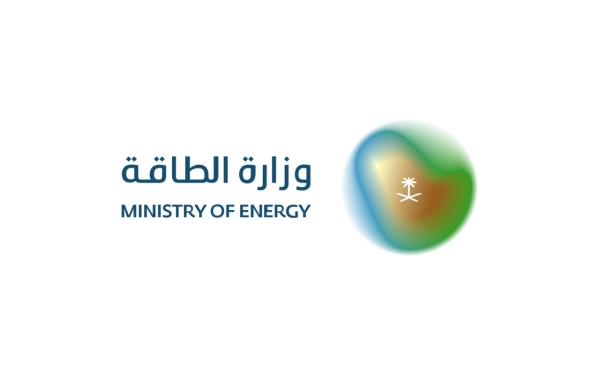

Carbon Capture in the Kingdom of Saudi Arabia is the process of capturing and storing carbon dioxide (CO2) to help reduce carbon emissions in the Kingdom. This technique involves extracting CO2 emissions from major facilities, such as power plants, and storing it underground or converting it into useful products, instead of allowing it to be released into the atmosphere.
Benefits of carbon capture
Carbon capture, utilization, and storage (CCUS) involves a range of techniques and technologies designed to separate CO2 from other gases, convert it into valuable products such as chemicals, polymers, and industrial materials, or store it safely underground. This technology has been used for decades in the refining sector to remove CO2 from natural gas for using it as an energy source.
CCUS can also play a key role in decarbonizing various sectors globally and is viewed as a crucial method for the long-term reduction of greenhouse gas emissions, contributing significantly to the circular carbon economy.
Saudi Arabia's membership in the Global CCS Institute
The Kingdom, represented by the Ministry of Energy, joined the Global CCS Institute on October 11, 2023. The institute comprises over two hundred members from thirty-three countries, including thirteen government entities. As the leader of national efforts in carbon capture and storage, the Ministry of Energy collaborates with the institute to build the necessary capacities for the adoption of these technologies.
The Kingdom is committed to several initiatives aimed at reducing carbon emissions, including carbon capture and storage technologies, in line with its target of achieving net-zero emissions by 2060.
Recognizing the importance of CCS technologies in mitigating emissions from heavy industries, the Kingdom announced in 2022 its plans to develop one of the largest CCS hubs globally. By 2035, the facility, located in Jubail Industrial City, aims to capture approximately forty-four million t of CO2 annually using CCS technologies.
Saudi Aramco's carbon capture technologies
In 1977, Saudi Aramco began capturing and processing associated gas as part of its main gas network to support domestic power generation and other industries. As a result, the company has nearly eliminated gas flaring to "zero," achieving one of the lowest carbon emission intensities in the sector.
Continuous research into emission reduction has led Saudi Aramco to invest in CCUS technology. The company has captured nearly 99 percent of its total gas production, reducing CO2 emissions by over ninety-eight million metric t per year.
Tree planting for carbon sequestration
In another scope, the bioenergy carbon capture and storage (BECCS) system uses carbon extraction and separation technology to capture and store CO2 from biomass, which is itself a renewable energy source. Nature also serves as a significant carbon sink, particularly mangrove trees, which sequester carbon more effectively than terrestrial forests. CO2 can also be captured by cultivating algae, which can then be harvested and processed into useful products such as biofuels and protein-rich animal feed.
Mangrove forests serve as massive natural carbon sinks. In 1993, Saudi Aramco began planting mangroves.
In early summer 2020, the company planted around two million new mangrove trees, setting a record in its ongoing commitment to combat climate change. With the addition of these two million trees, the total number of mangrove trees planted by the company now exceeds four million, since it began efforts to restore mangrove forests nearly three decades ago.
Innovative carbon capture technologies
Saudi Aramco's research efforts culminated in a breakthrough solution for natural gas flaring. In 1986, Mazen Mashour, a Saudi Aramco engineer, developed a new design, leading to the invention of a high-pressure air system, for which he obtained a patent. This technology uses compressed air, sourced from either the plant’s air system or a dedicated air compressor at each site. The high-pressure air is introduced into the air distribution ring, and the jets located on the windshield create the necessary turbulence for smoke-free operation. The large airflow produces a hotter flame, burning impurities rather than releasing them into the air.
This technology has proven to be fast, cost-effective, and easy to apply, requiring an average of just three days for installation. This is particularly crucial when shutting down the entire plant for safety reasons, which is a costly process. The robust design was intentional, given that most of Saudi Aramco's gas flare towers are located in remote areas, where equipment needs to operate for extended periods without requiring significant maintenance. The invention earned a gold award at the International Inventors Conference in Geneva in 2006, recognizing its contribution to reducing emissions.
The high-pressure air system was first installed at Shaybah in June 2000, followed by its installation in twenty-nine major operations as part of Saudi Aramco’s smoke-free gas flaring project in the southern region.
Pioneering carbon capture projects
Saudi Aramco is implementing one of the largest pilot projects for CO2 capture and storage in the Middle East. The goal is to demonstrate the feasibility and advancement of capturing CO2 and injecting it into oil reservoirs as part of the company's broader strategy.
Saudi Aramco is capable of capturing forty-five million standard ft³ of CO2 per day at its al-Hawiyyah gas plant. The captured CO2 is then transported via an eighty-five-km pipeline to Uthmaniyah oil field, where it is injected into oil reservoirs. This method not only captures CO2 but also maintains reservoir pressure, helping to extract more oil. Since the initial introduction of CO2 injection in 2015, the company has successfully doubled oil production from four wells.
This advanced scientific achievement led Saudi Aramco’s pilot enhanced oil recovery project, using CO2 injection at Uthmaniyah, to win the Asia Responsible Enterprise Award for Green Leadership.
The award is part of a prestigious global platform that recognizes sustainability efforts in Asia's industrial sector. This is the first time Saudi Aramco has received this award for its sustainability efforts in enhancing oil recovery through CO2 injection. Over six years, the project has won eight international awards.
International cooperation in carbon capture
Saudi Aramco continues its efforts in carbon capture through collaborations with leading international companies. The company has joined the World Bank’s "Zero Routine Flaring by 2030" initiative, affirming its commitment to reducing gas flaring. Saudi Aramco's standing in the oil and gas sector is noteworthy for maintaining a flaring rate of less than 1 percent of its total raw gas production during the first half of 2019.
As a result of implementing best practices in reservoir management at Saudi Aramco, along with gas flaring reduction and energy efficiency programs, the company achieved one of the lowest carbon emissions intensity figures in the world in 2018, reaching 10.2 kg of CO2 equivalent per bbl of oil equivalent from its exploration and production operations.
Furthermore, Saudi Aramco extends its efforts globally as a founding member of the Oil and Gas Climate Initiative, whose participants represent one-fifth of global oil and gas production. This initiative is committed to developing impactful technologies to reduce emissions while continuing to meet the world’s energy needs.
Developing carbon capture solutions
Saudi Aramco continues its carbon capture efforts and, in 2022, launched the Advanced Research Center (ARC KAUST), strategically located at King Abdullah University of Science and Technology (KAUST). The center is dedicated to accelerating the development of low-carbon solutions for the energy industry by leveraging advanced analytics, artificial intelligence, and machine learning. The focus is on innovating low-carbon technologies to enable a circular carbon economy.
International carbon capture conference
On a national level, the Kingdom hosted the International Conference and Exhibition on Carbon Capture, Utilization, and Storage (iCCUS 2020) in 2020. During the event, the importance of CCUS technologies in the circular carbon economy framework was emphasized, highlighting their economic and environmental benefits. The technological advancements discussed are seen as critical in addressing carbon emission challenges while also contributing to cleaner fuels and valuable feedstock for useful products.
Carbon capture research projects
On December 15, 2022, the Saudi Electricity Company, in collaboration with KAUST, launched a research project focused on carbon capture using deep cooling technology at the Rabigh Power Plant, alongside capturing sulfur and nitrogen oxides. The project aims to capture one t per day of liquid carbon at Rabigh.
On June 6, 2023, the Desalination Technologies Research Institute, the research core of the Saudi Water Authority, launched applied research projects aimed at carbon capture to reduce emissions and leverage thermal units in production systems, in support of achieving carbon neutrality by 2045.
Among these projects is one focused on capturing CO2 from Ras al-Khair production system using a highly efficient absorbent material, capable of capturing two hundred t of CO2 per day, which equates to 73,000 t annually. The captured CO2 will be reused in the final treatment of produced water at an operational cost reduced by approximately 50 percent by mid-2025.
Another project aims to extract 44,000 t of CO2 annually to produce high-quality calcium carbonate by using secondary by-products from cement factories and integrating them with wastewater. This high-quality calcium carbonate can then be utilized in various applications, particularly in the pharmaceutical and medical fields.
There is also a project for the cultivation and growth of microalgae to be utilized in the desalination industry and contribute to reducing carbon emissions and producing biofuels. This project enables the capture and sequestration of CO2.
Additionally, there is another project aimed at capturing and reusing CO2 in the initial treatment of production systems that operate with thermal technologies. This project captures CO2 from thermal systems and reuses it in the Dissolved Air Flotation system for the initial treatment of reverse osmosis systems, eliminating the need for an air compressor system and reducing chemical use. The project is expected to capture around fourteen million kg of CO2 annually.
Related quizzes
Related articles

